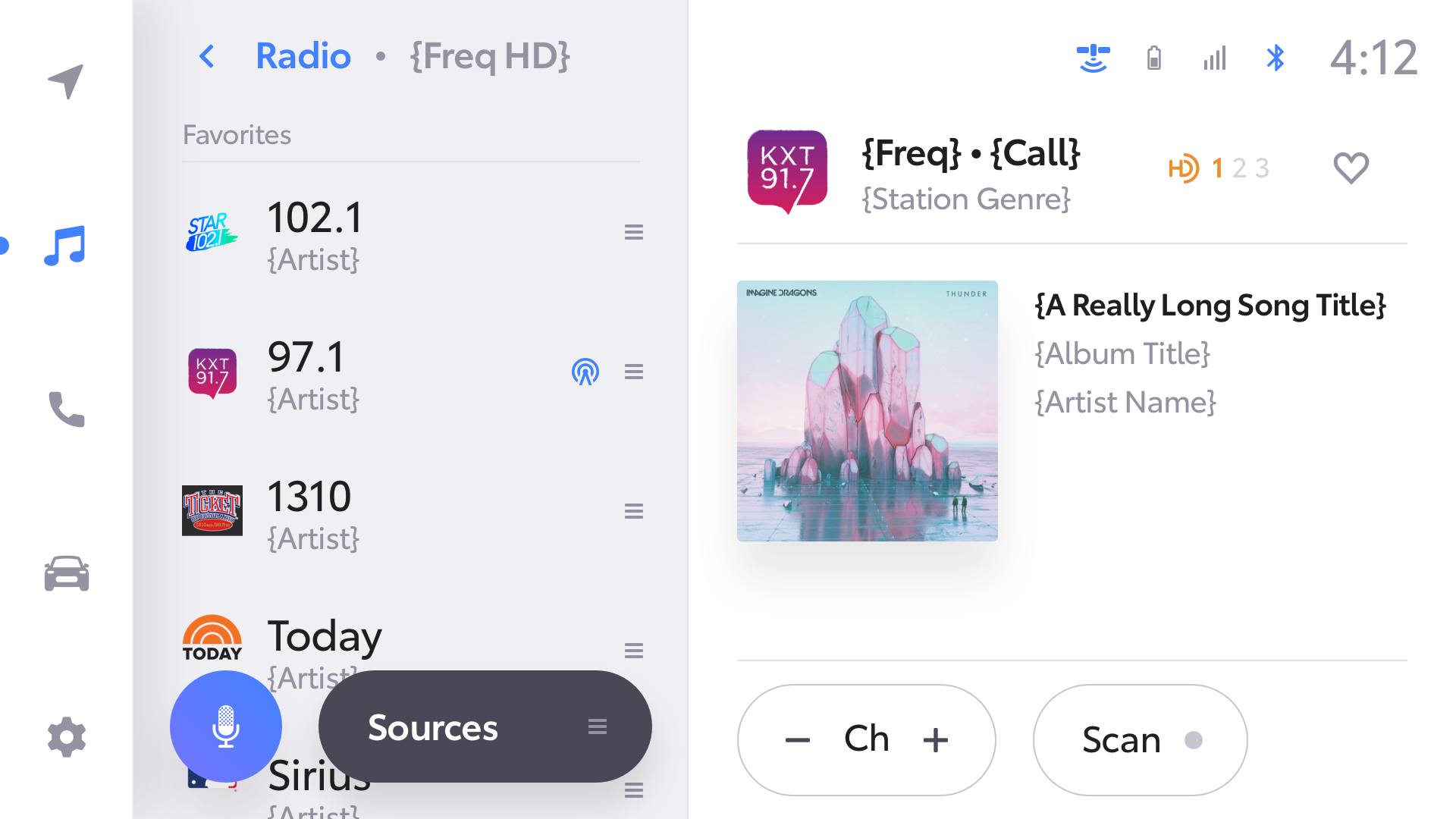toyota multimedia system
I was part of the design team that led the redesigning of Toyota’s new multimedia system, a system which debuted in 2021 Lexuses, and continues to roll out in new Lexus and Toyota cars. This project was the first time that Toyota had their system created in a design-first process, and was a turning point in their approach to their traditional navigation systems.
The Problem
There were multiple reasons for Toyota’s (and many other Automotive companies’) in-vehicle experience to be outdated, compared to tech counterparts such a phones and computers.
The hardware that generally supports them was sluggish, safety regulations made them tricky to redesign, and most of all, none of the competition pushed the bar in this experience. That is, until systems such as Teslas, or even CarPlay, came into the picture. Suddenly, there was a need to change, both drastically and quickly.
My role
I worked heavily across all phases of the design, from planning with internal and external product owners, to creation and upkeep of our design system, and designing user journey flows and screens. My main focus was on the music, navigation, and vehicle enhancement sections of the product, but as all the different sections had to work together, I had a very comprehensive view of the whole system.
I also worked with a research team to do user testing on our initial concepts, as well as did some practical testing of the product in action.
challenges & constraints
One of the most challenging parts of designing a vehicle’s multimedia system is the safety regulations that come with it. The rules that exist are numerous, but I had to make sure that our designs abided by them, and in a way that still made for an elegant experience.
Another challenge that comes with designing a change on this level, was helping such a large company adapt to the new processes. Development for these systems are traditionally slow and took at least 4 years, but we couldn’t afford to take that long and had to find ways to ease the timeline along quicker.
The Solution
With safety in mind, one of the main cornerstones in this product was to have all the main features you’d need available via voice, akin to what you’d have in your phone. Oftentimes, people pick up their phone while driving because the system restricts them from what they need to access while the car is in motion. In order to alleviate this, we made the voice system extensive across the entire platform. Our design components were also made to be big, clear, and easy to differentiate at a glance.
In order to not be delayed by the hardware development (which hadn’t even left the factory at the time), we developed a functional prototype that worked on iPad. Because of this, we were able to just strap one to the dashboard of a car, and actually test the design in a real environment. By doing this, we were able to iterate on design before the actual hardware arrived, greatly reducing the development time as well as making sure that our design was as clear as intended.


